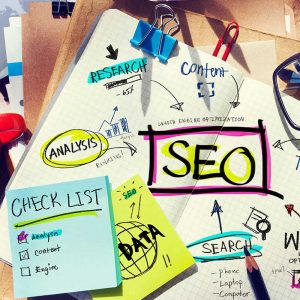
Search Engine Marketing – A Strategy for Better Results
When a user searches a term on Google, they expect the search engine to deliver the best and most accurate results possible. More importantly, Google wants to provide the best experience for the user, so there’s a lot that goes on in the backend of that search in less than a second. To compute the results for “flight to New York,” Google has to consider which keywords are most important and produce results based on a website’s content, authority on the subject, usage data, and much, much more.
It would be a behemoth of a task to go through every time. Luckily, Google employs search engine marketing tactics to find, and even predict what terms users are seeking. Search engine marketing is what advertisers engage to increase their site’s visibility on the search engine results page (SERP) for more traffic, hopefully leading visitors to buy. But how does Google sift through millions of pages to find the one you’re looking for? Digital marketing separates the lower quality links from the higher quality ones through two main categories: search engine optimization and paid advertising.
The Difference Between SEO and Paid Advertising
Search engine optimization, or SEO, is using unpaid methods to have a higher rank in search engine listings. Otherwise known as organic search, it largely relies on the use of relevant keywords and html tags in a content-rich site for a high search results ranking. Other ways to gain credibility include getting other websites to link to your site (backlinks) and making your site navigable across all devices (responsive development). The downside to only using SEO is that it can take a long time for changes to take effect, and you’re also up against all the other sites vying for attention in the same keyword space.
For businesses willing to invest in more immediate results, paid or pay-per-click advertising is the way to go. According to Wordstream, Google earns approximately $32.2 billion in advertising revenue, which is roughly 97 percent of its total revenue. Many advertisers view it as worth the extra bump in competitive and noncompetitive phrases in return for more traffic. Google AdWords implements the most popular pay-per-click model. Once Google validates your site as relevant, with the keywords you’ve chosen, and your ad is useful for users, advertisers compete in a bidding auction for position in the paid advertising space. Then, once your ad has been accepted and clicked, a small fee is paid to Google. Done effectively, this is a small price to pay for the higher possibility of a profit.
Should You Use SEO or Paid Advertising?
Understanding the effectiveness of each search engine marketing tactic, this brings the question: which one should you use? In general, organic SEO is a must for all businesses to start building a presence across the web and to be indexed by search engines. Depending on the type of industry your business is in, it may be virtually impossible to compete for attention without the use of paid advertising.
Using the “flight to New York” example from earlier, the first page yields pay-per-click advertisements at the top, a location based widget box and finally organic search results ‘below the fold’. With more aggressive methods reserved for crowded categories like travel and shopping, pay-per-click can make even more of noticeable difference in more niche categories. That being said, organic SEO and paid advertising, when used together, can be powerful tools. For businesses first attempting search engine marketing, working with Google’s complex and ever-changing algorithms can be a tricky field to navigate. Having an advertising agency like evōk on your side, with knowledge of the ins and outs of search engine marketing, will make rising up the search engine results page easier.
evōk and Effective Search Engine Marketing
At evōk, we employ a holistic SEO approach and paid advertising tactics tailored to our clients in a variety of industries every day. When Google changes their algorithm, we’ll be one of the first to know, as we consistently hone in on what is successful for our clients. Our client NMEDA (www.nmeda.com) is a great example of how we have our finger on the pulse of the ever-changing search engine marketing landscape.
In April 2011, NMEDA averaged 34 organic visits per month. After an overhaul of their site, that included a strong and constantly monitored SEO strategy and renewed focus to its audience as well as a mobile-friendly design, the numbers improved impressively. As of March 2015, the NMEDA site now boasts an average of 5,900 organic search visits per month. Our robust content marketing strategy, with monthly keyword optimized blog posts and improved social media presence for NMEDA, has made for successful, results-producing work.
The Keywords to Know
Pairing the best, most helpful sites to users is what keeps Google the number one search engine. Taken in August 2015, Google’s comScore is a cool 64 percent while others trail behind by 20.3 and 12.7 percent. When your site offers valuable information and is easy to navigate for visitors, both your business and Google benefit from that positive user experience. But, to have the best chance at high visibility, you should employ both SEO and pay to play with pay-per-click advertising. In the time you read this blog, you can be assured tweaks have been made to Google’s algorithm, changing the way the results return. Rather than going through the steps by yourself, unsure of which options will yield the best results, trust an advertising agency that has grown with digital marketing and knows how to implement it well. With evōk, you have an agency you can depend on that understands your business needs and has what it takes to make it thrive.
[sep]
